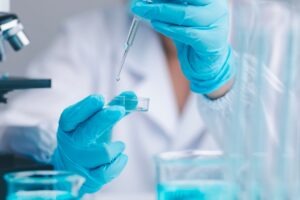ERS Genomics and IRBM have entered into a non-exclusive license agreement, granting the latter access to ERS Genomics' extensive clustered regularly interspaced short palindromic repeats (CRISPR)/Cas9 patent portfolio.

The editing technology will also be integrated into comprehensive drug discovery services of IRBM. Credit: Tung Lam from Pixabay.
Subscribe to our email newsletter
With this agreement, IRBM will be able to leverage CRISPR/Cas9 technology to advance its drug discovery processes.
The editing technology will also be integrated into the comprehensive drug discovery services of IRBM.
IRBM, a contract research organisation (CRO) specialising in drug discovery, has expertise in various therapeutic areas, including oncology, infectious diseases, and neuroscience.
The company has a track record of contributing to the discovery and development of four marketed drugs for diseases such as HCV, ovarian cancer, HIV and cutaneous T-cell lymphoma.
ERS Genomics offers access to its CRISPR/Cas9 technology for various companies to facilitate use for their commercial programmes.
The company’s patent portfolio, licensed from co-inventor Emmanuelle Charpentier, includes over 100 patents worldwide.
These patents cover the use of CRISPR/Cas9 in a broad range of cells, from mammalian to microorganisms like bacteria and yeasts.
IRBM CSO Carlo Toniatti said: “We are committed to delivering high quality drugs by leveraging our broad range of expertise and capabilities across the entire preclinical drug discovery continuum.
“With the integration of CRISPR/Cas9 gene editing technology we are increasing our capability to identify and validate potential drug targets, to generate more predictive pre-clinical models and to elucidate the mechanisms of action of novel therapeutics.”
The companies did not disclose the financial terms of the deal.
ERS Genomics CEO John Milad said: “We are committed to supporting cutting-edge research and expanding the horizons of medical innovation by providing companies such as IRBM with the ability to take advantage of CRISPR/Cas9 technology.
“We look forward to seeing the innovative ways in which our gene editing technology will be utilised in various stages of drug discovery, providing candidates for a wide range of therapeutic areas.”
 Advertise With UsAdvertise on our extensive network of industry websites and newsletters.
Advertise With UsAdvertise on our extensive network of industry websites and newsletters.
 Get the PBR newsletterSign up to our free email to get all the latest PBR
news.
Get the PBR newsletterSign up to our free email to get all the latest PBR
news.

